Srinagar - The Ultimate Paradise
Despite being at the mercy of the weather gods, rangan datta manages to enjoy much of the spectacular scenery of Srinagar
I peeped out from my houseboat window to see that clouds had descended low over the mountains, almost to the level bank of Jhelum River, and blended far into the valley. It was my first morning in Srinagar and definitely not a good one at that. I had travelled alone from the other end of the country to the most beautiful and probably the most disturbed part of the country only to find myself at the mercy of the weather gods.
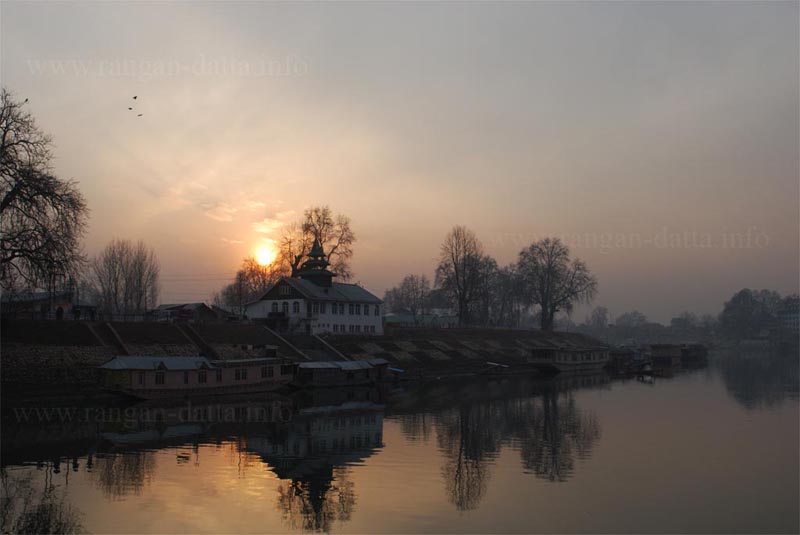
My eight-hours journey in a Jeep started along the Jammu – Srinagar Highway, notorious for militant attacks and frequent military check points, and had beena a smooth one surprisingly. Obviously there was no militant activity and I was never questioned at the few checkposts, where our car was stopped for routine checks. But I did encounter endless lines of ‘camouflaged’ military trucks meandering their way up the narrow mountain road and armed soldiers standing on guard almost along the entire stretch of the highway.
To add to my woes, it soon started to drizzle. Sitting by the bukhari, (indigenous fireplace) I finished my breakfast while praying for the weather to clear. My prayers were answered and the drizzle stopped but clouds were looming low over the valley.
I took an auto and headed for the Shankaracharya Temple, situated on the hilltop overlooking the lake and the valley. Soon I moved past the Dal Lake, full with houseboat and sikharas. My auto took a diversion from the lake and started climbing to the hill, housing the ancient temple.
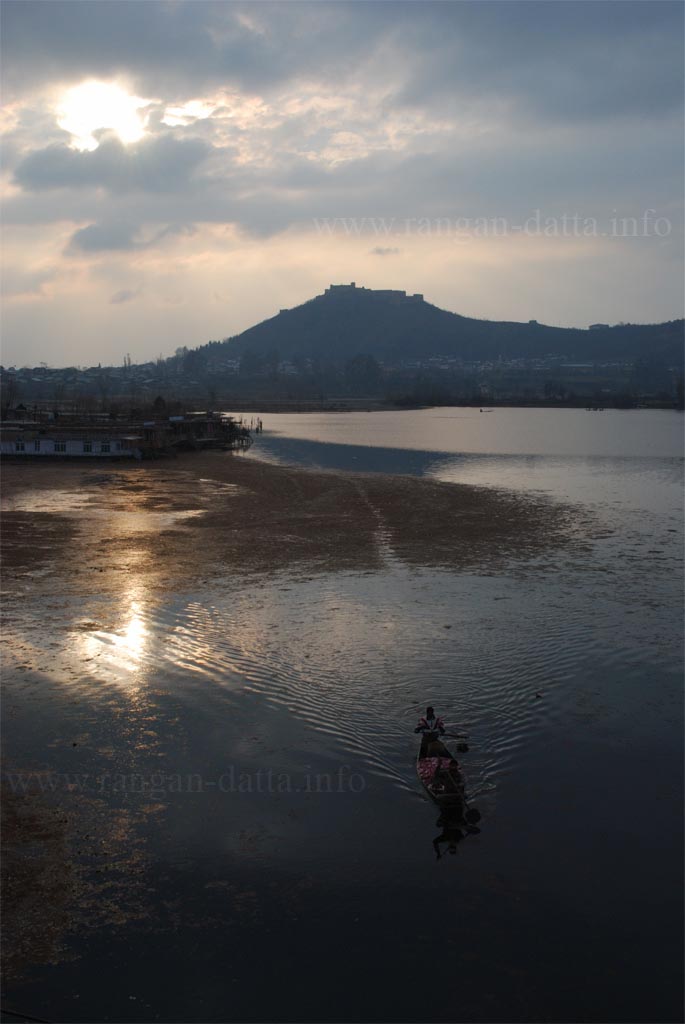
Getting down from the auto, I took a steep staircase to the 1000-year-old temple. Sadly the age-old structure has been largely modified and in the process lost much of its beauty and grace. Moreover the great view, which the hilltop is said to offer was completely blocked out by the clouds.
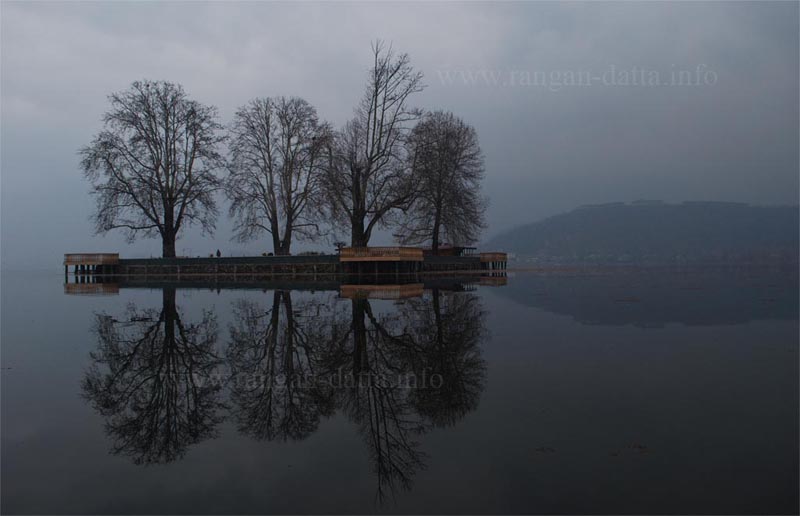
Dejected, I descended from the hill and headed for the most exotic part of my journey – a shikara ride on Dal Lake. As I set for sailing in my Shikara, other boats selling all kinds of things, from Kashmiri shawls to woodwork and from saffron to the magical stone of Silajit, surrounded me. But they soon left and I was on my own, enjoying the pristine beauty of the lake.
My boatman rowed me past two large boats providing swimming and water-skiing facilities. Unwilling to plunge into the icy cold water I decided to give both a miss and continue with my leisurely ride.
Next I passed the Kabutar Khana (place of pigeons) and headed deep inside the lake. Soon the island of Char Chinar appeared as a dot in the horizon only to be transferred into a tiny square island, housing four chinar trees at its corners. The leafless trees with intricate network of branches created a gloomy but stunning spectacle with the overcast sky as the backdrop.
After a brief stop at the island I headed for the floating gardens and the floating markets. This is probably the most interesting part of the lake. As I moved past the floating vegetable gardens, I searched in vain for the posts and sagging wires separating one territory from the other. The Dal Lake actually consists of several lakes connected by an intricate maze of canals. My shikara floated through the amazing maze of canals past the vegetable gardens, which finally merged with the floating market.
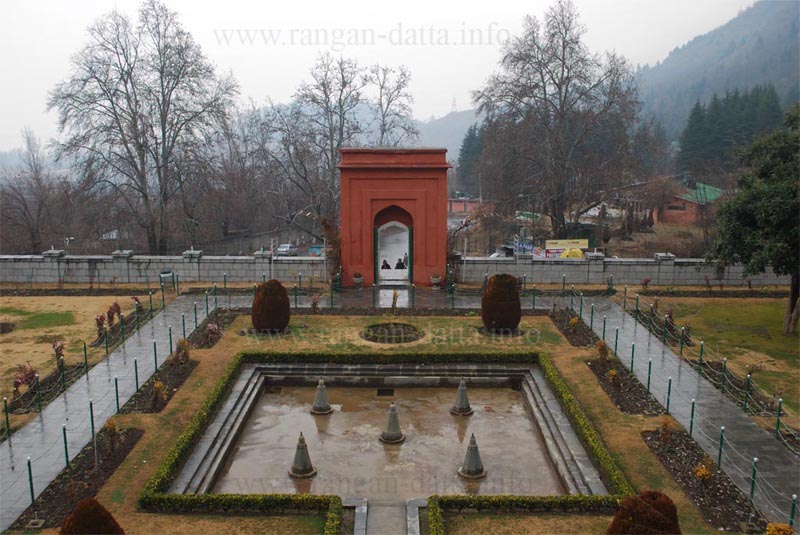
The floating market not only had shops selling Kashmiri carpets and artifacts to tourists, but also had grocery shops selling articles of day-to-day use to the locals. It houses a dispensary, providing doctors on call, who move around on a red cross marked shikara. Suddenly I found myself out of the floating market and into the open part of the lake and soon ended my journey covering almost the entire Southern part of the lake, in about two hours.
By now the weather cleared considerably and the sun was playing hide & seek with the clouds. Quickly I swapped my transport and headed towards the Mughal Gardens of Srinagar. The concept of a garden representing paradise is one of man’s oldest obsessions. The paradise promised in the Quran consisting of several terraces of gardens, each one more splendid than the previous. The terraced Mughal Gardens complete with fountains and water channels, are a prime tourist attraction of Srinagar.
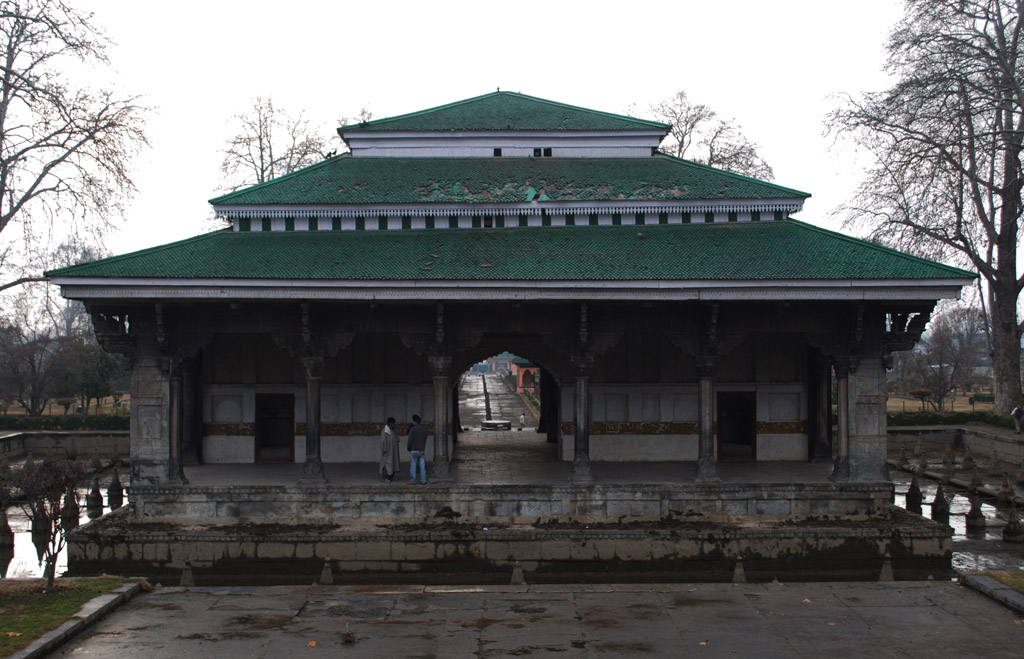
My first stop was Cheshmashahi. This three-terraced garden is the smallest in Srinagar. A natural spring provides water, considered sacred to the garden. My next stop was Nishant Bagh, built by Nur Jahan’s brother Asaf Khan, a seven-terraced garden with a central water channel and numerous fountains.
My final stop was the Shalimar Gardens, constructed by Emperor Jahangir; this four-terraced garden was completed with water channels, fountains and a central stoned pavilion. The garden lined with chinar trees provided great view of the lake and the valley.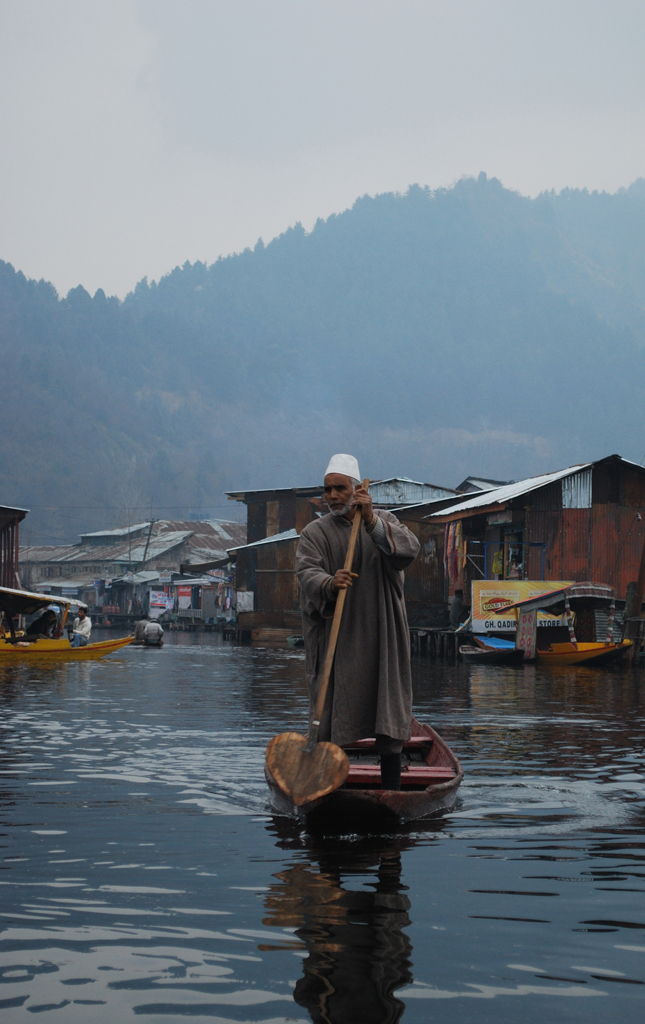
Bidding farewell to the Mughal Garden, I headed towards the shrine of Hazarat Bal, said to contain a strand from the Prophet’s Beard, displaced on a special occasion. I was on a wrong day and denied the opportunity of viewing it. Located on the North–Western edge of the Dal Lake, the shrine with its white dome and minarets, offers great view of the Dal Lake with an island also housing four chinar trees, different from the one I visited in the morning.
It was getting dark so I decided to head back to my houseboat but not before enjoying a spectacular sunset on the Nagin Lake (smallest and probably the most beautiful part of Dal Lake) with Hari Parbat, crowned with Akbar’s Fort, in the backdrop.
Access
Nearest Railhead: Jammu. Well connected from Calcutta by Jammu Tawai & Himgiri Express.
Nearest Airport: Srinagar
Jammu – Srinagar jeep 8 hours, fare Rs300 per head.
Accommodation
Houseboats at Dal Lake Rs800 – Rs2000 per night including breakfast & lunch.
Hotels are also available at Dal Gate & Lal Chowk.
Getting around
Two-hour shikara ride covering the southern part of the lake is about Rs800
Three-hour auto tour covering Shankaracharya Hill, Moghul Gardens and Hazarat Bal comes for Rs600.
Note: Jeep, auto, shikara and houseboat charges are subject to heavy bargaining.
|

